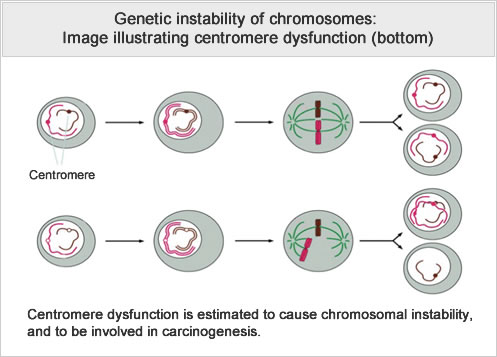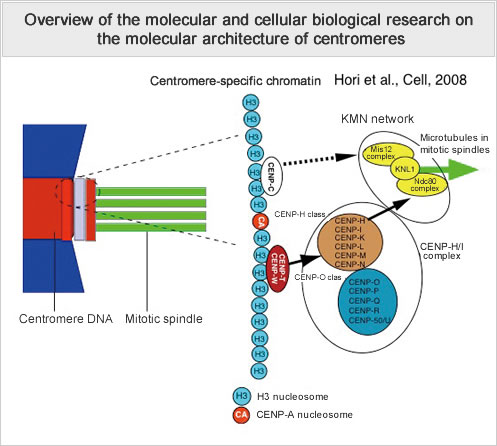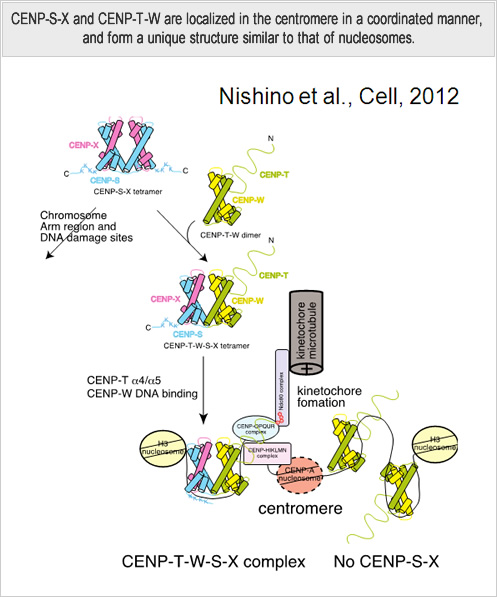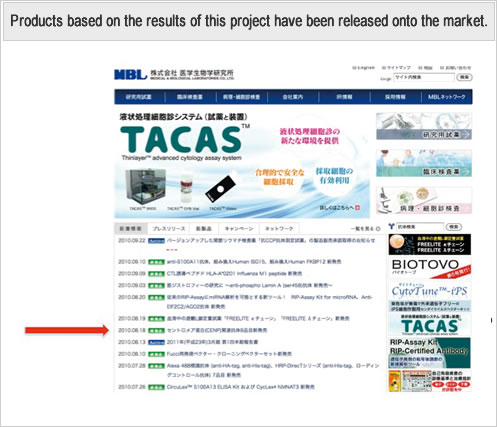Home > Research themes > Development and application of an experimental system to analyze centromere dysfunctions that promote cancer
Main content starts here.
Development and application of an experimental system to analyze centromere dysfunctions that promote cancer
Assistant professor Tetsuya Hori, Department of Molecular Genetics, National Institute of Genetics
(FY2010-2012)
Aims and Expected Results of Research
Abnormal cell division is known to induce cell carcinogenesis. However, details pertaining to the structure and function of centromeres, which play a central role in cell division, have not yet been fully understood. Through a comprehensive understanding of the structure and functions of centromeres, as well as the elucidation of various molecular mechanisms involved in chromosome partitioning, this study aims to provide guidance which will become the basis for opening new ways in the diagnosis and treatment of cancer, and aims to serve as a basic knowledge that will be used in a wide range of applications in the field of biology.
Progress made during previous years
We have identified various centromeric proteins, and have determined the three-dimensional conformation of some of them, based on which we have elucidated their roles and functions in cell division.
FY2012 results
In addition to identifying new proteins, we have determined the three-dimensional conformation of the proteins that we have identified, and conducted a more detailed analysis of their functions and roles in cell division.
This research activity can provide scholarly knowledge that will open new avenues in the diagnosis and treatment of cancer, and can contribute to the commercialization of diagnostic antibodies and therapeutic drugs aimed at centromeres (about 10 types have been published).






